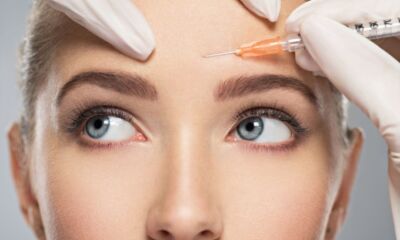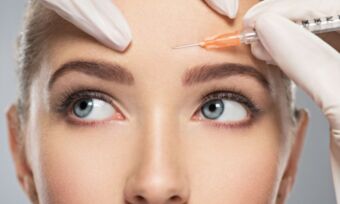How much does Botox cost?
Botox is widely used for cosmetic and medical treatments in Australia. Learn how much Botox costs, what health insurance may cover, and key differences between aesthetic and therapeutic use.

Botox is widely used for cosmetic and medical treatments in Australia. Learn how much Botox costs, what health insurance may cover, and key differences between aesthetic and therapeutic use.
KEY POINTS
- Botox costs vary widely depending on the treatment area, number of units used, and practitioners. The effect is temporary, so ongoing treatments add to the total cost. At the time of writing, Botox costs between $8 and $25 per unit.
- Botox is used for both therapeutic (medical) and cosmetic purposes, with different treatment goals and dosages.
- Cosmetic Botox is usually paid fully out of pocket, while therapeutic Botox may be partially covered by Medicare or private health insurance if clinical criteria are met.
What is Botox, really?
Initially seen as the go-to anti-wrinkle injectable solution for celebrities, Botox is the common brand name for botulinum toxin type A. Healthdirect Australia describes it as a purified neurotoxin complex (toxic to our nervous system) that can be used for some cosmetic and medical purposes.
Botox works by targeting the nervous system to stop nerve signals from reaching muscles. This causes muscles to relax and prevents the skin from creasing and causing wrinkles. As it is highly toxic, Botox is available in Australia by prescription only.
How much does Botox cost?
The cost of a single Botox treatment variesy widely, depending on the area/s you target and how many units are required. The greater the area or number of areas you treat, the higher the cost.
At the time of writing, Botox costs between $8 and $25 per unit, with most treatment sessions requiring several units depending on the area being treated. For example, a treatment to the forehead, might require between 10 and 20 units. The effect is temporary, lasting for three to four months, which means it could become a repeat cost if you maintain treatments.
Despite the ongoing costs, the procedure remains popular in Australia. Grand View Research valued the Australian facial injectables industry at $4.1 billion in 2023, with Botox and fillers being the most popular treatments driving market growth.
Aesthetic Botox treatment costs in Australia
Botox prices usually depend on the number of units used and the area being treated. Since Botox for cosmetic use isn’t covered by Medicare or private health insurance, you’ll pay the full price yourself.
Here’s a guide to how many units are typically needed for common treatment areas, based on typical Botox usage units outlined in the Australian Therapeutic Goods Administration (TGA) product information.
Glabellar lines (eyebrow creases) Botox cost:
- Typical units used: 20 units
- Average cost range per unit: $8 – $25
Crow’s feet (lines appearing at the outer corner of the eye) Botox cost:
- Typical units used: 12 to 36 units (6 to 18 units per side)
- Average cost range per unit: $8 – $25
Forehead lines Botox cost:
- Typical units used: 8 to 24 units
- Average cost range per unit: $8 – $25
The above figures provide an estimate only; the actual number of units required will depend on the treatment area and your provider’s assessment. The price of each unit may also vary depending on your location and provider.
Medical Botox treatment costs in Australia
According to the Australian Government Department of Health and Aged Care’s Medical Costs Finder, typical Botox treatment costs for some medical conditions in 2023-24 were approximately as follows:
Uncontrollable neck spasms (cervical dystonia, MBS 18353):
- Average provider fee: $300
- Medicare rebate: $234
- Out-of-pocket cost: $66
Moderate to severe muscle spasms (MBS 18360):
- Average provider fee: $150
- Medicare rebate: $117
- Out-of-pocket cost: $34
Severe underarm sweating (hyperhidrosis, MBS 18362):
- Average provider fee: $510
- Medicare rebate: $231
- Out-of-pocket cost: $280
Eye muscle spasm (blepharospasm, MBS 18372):
- Average provider fee: $180
- Medicare rebate: $117
- Out-of-pocket cost: $63
Prophylaxis of chronic migraines (MBS 18377):
- Average provider fee: $266
- Medicare rebate: $117
- Out-of-pocket cost: $150
These figures serve as a general guide. Actual costs may vary based on provider fees and location.
Why would you get Botox?
Cosmetic Botox is generally used as an anti-wrinkle treatment for the upper face—typically targeting laugh lines, crow’s feet, and deeply ingrained forehead lines. However, Healthdirect Australia also lists a number of medical reasons for Botox use, such as for treatment of chronic migraines, teeth-grinding, incontinence and excessive sweating. It’s important you first talk to your GP to see if it’s suitable for you.
Botox for cosmetic and therapeutic use: What’s the difference?
Botox cosmetic and Botox therapeutic both use botulinum toxin type A, but they serve different purposes. The key difference lies in the intent of treatment—cosmetic use focuses on appearance, while therapeutic use targets medical conditions.
Botox for cosmetic use is designed to potentially reduce facial wrinkles and fine lines, particularly in areas like the forehead, between the brows, and around the eyes. It may be chosen by people looking to soften expression lines and maintain a youthful appearance. For aesthetic purposes, lower doses are typically used, and treatments are commonly offered by dermatology and cosmetic clinics.
In contrast, therapeutic Botox is used to treat medical conditions such as chronic migraines, muscle spasms, excessive sweating (hyperhidrosis), and certain bladder disorders. The doses are generally higher and tailored to the condition being treated. These injections are typically administered by medical specialists such as neurologists, urologists, or rehabilitation physicians.
The effects of both types of Botox are temporary. Cosmetic results usually last around 3–4 months, while therapeutic effects may last a bit longer, depending on the condition.
Cost and coverage are also important differences. When used for aesthetic purposes, Botox is considered elective and isn’t typically covered by Medicare or private health insurance. In contrast, when used to treat medical conditions, it may be eligible for a Medicare rebate or partial private health cover if certain clinical criteria are met.
Is Botox covered by health insurance?
It’s unlikely that private health insurance will cover Botox in non-medically necessary cases, such as to improve appearance where no prior injury or acquired deformity exists. So, if it is purely a cosmetic procedure, it’s likely you’ll need to pay for all treatment costs.
If you need Botox for medical reasons, then you might be eligible to recover some costs. Currently, Botox is subsidised on the Pharmaceutical Benefits Scheme in some cases, such as when used to treat sufferers of chronic migraines.
Private health insurance may offer some cover for the costs of medically necessary treatments using Botox, depending on the terms and conditions of your policy. According to Canstar Research, Botox would fall under the category that the underlying issue being treated is in. For example, Botox injections to treat chronic migraines would fall under the Brain and Nervous System category, which is included in policies from the Bronze tier and up, but may also be included in a Basic Plus policy.
It’s also important to note that private hospital cover will only cover you for hospital treatments, so if the Botox procedure wasn’t completed at a hospital, you likely won’t be able to make a claim. It’s a good idea to read your policy’s product disclosure statement (PDS) or talk to your provider to find out if your procedure is covered, what your excess is (the amount you will pay your insurer when you make a claim) and whether any waiting periods apply.
If you are thinking about taking out a new policy, it is a good idea to consider factors like premiums, out-of-pocket fees, policy inclusions and exclusions, and any waiting periods that could affect your claim.
Does Medicare cover Botox?
Medicare does not cover Botox for cosmetic reasons. However, for medically necessary treatments such as migraines, Medicare may partially cover your costs.
Eligibility depends on:
- Having a valid Medicare item number
- A referral from your doctor
- Trying other treatments first
Check with your GP and Medicare to confirm your eligibility.
What could go wrong: potential risks of Botox
When correctly administered, Botox is considered safe, according to BetterHealth. However, side effects can still occur. These are usually temporary and around the injection site, such as drooping eyelids, bruising, headaches, facial pain, redness, swelling, or numbness. In rare cases, the effects of Botox can spread beyond the injection area, causing more serious problems with swallowing, speaking, or breathing.
It’s important to remember that Botox is a powerful bacterial neurotoxin that can be dangerous if misused. According to the Australasian College of Cosmetic Surgery (ACCS), a medical consultation with a doctor is legally required before treatment. Botox must be administered by a qualified health practitioner (usually a doctor) or under their direct supervision.
In 2018, the ACCS called on the Australian Government to strengthen guidelines on cosmetic surgery to increase protection for patients by introducing an accreditation system for practitioners. This came about following concerns of an increasing number of non-medical injectors, for example in beauty clinics, that offer the treatment under a doctor’s supervision, which could be via Skype.
Since then, regulation has tightened significantly. In 2023, laws were passed to restrict the use of the title “surgeon” to properly qualified doctors, and further reforms are now underway. From September 2025, the Australian Health Practitioner Regulation Agency (Ahpra) will enforce new national guidelines for all cosmetic procedures. These include mandatory training, minimum experience requirements for nurses, and stricter advertising rules—aimed at improving patient safety and reducing misleading or unsafe practices.
Given the risks, it’s highly recommended to do your research on practitioners before commencing treatments. There have been numerous reports of botched cosmetic procedures—both in Australia and overseas—linked to inexperienced or unregulated providers.
It is a good idea to familiarise yourself with the ACCS’ patient factsheet, which includes more information about cosmetic treatments and key questions to ask your practitioner before undergoing any treatment.
Cover image source: valuavitaly/Shutterstock.com
Talk to a health insurance specialist to find the policy that suits your needs
This article was reviewed by our Finance Editor Jessica Pridmore before it was updated, as part of our fact-checking process.

 Psychiatric services
Psychiatric services
 Rehabilitation
Rehabilitation
 General dental
General dental
 Physiotherapy
Physiotherapy
Try our Health Insurance comparison tool to instantly compare Canstar expert rated options.
Talk to a health insurance specialist to find the policy that suits your needs






